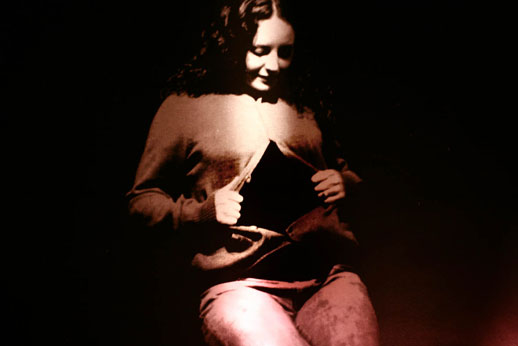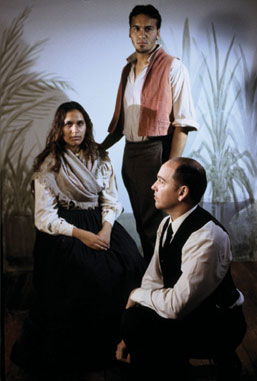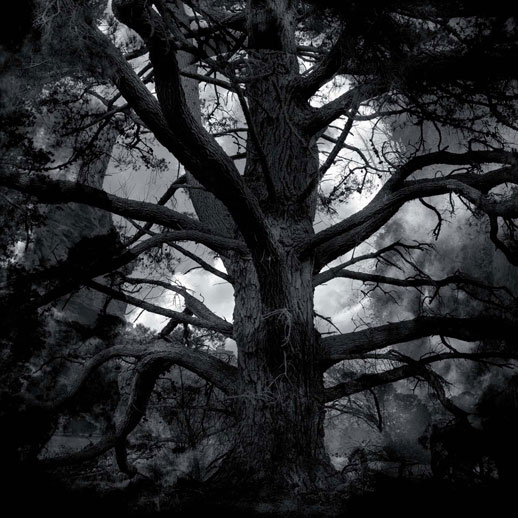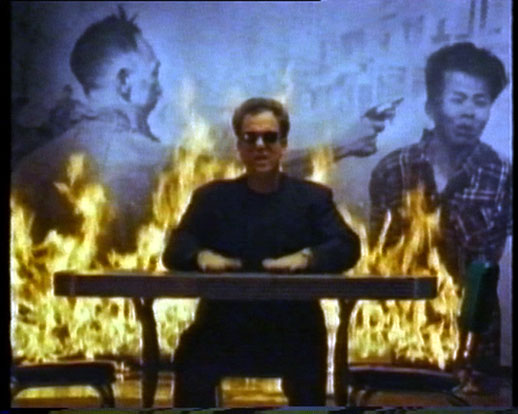Curating the Unattainable
“As a curator I’d like to make a statement to society, that art is necessary. It doesn’t have to be a major thing, it could be minor compared to other fields…but still, it matters directly, as a basic element to continue our lives as human beings. It’s a very fundamental, essential element; and I thought that the words ‘trace elements’ could be used to deliver this concept to the general public.”
Is ‘Trace Elements’ directly to connected to the 2006 Rapt! Project that you worked on, or only slightly?
The mission of the Japan Foundation is to introduce culture or knowledge about Japan overseas; they are not interested in having the project come back to Japan… although they do sometimes come back.
So the main thing for the Japan Foundation is to introduce Japan for ‘export’, but the main curators and I didn’t want to do that for “Rapt!”. We decided to curate something opposite to the export-package style of exhibition, instead making it more a ‘work in progress’, not only for the artists but the curators. We also decided to invite professionals from different fields. This was for the “Rapt!” project, and then that has come back into “Trace Elements”.
The Japan Foundation changes the focus of their country-based projects each fiscal year. This year, 2008, was China, Indonesia, France… So it is almost impossible to realize an effective network for the future; their approach is just about planting a seed. It takes time… We can meet people, and we can get to know each other through an initial contact, at an instinctive level, but it takes time to develop a network of people, to develop working relationships into friendships, being able to discuss something together.
So is it superficial? That there isn’t time to build something in that one fiscal year…
I think so. That’s why I thought that it wasn’t necessary to work with certain other projects or institutions, because we can continue our relationships or friendships with a longer perspective, because I work as an independent – I mean, even though I belong to this foundation, as the in-house curator, I also work for different people in society. I can select; I think I have a right to select. So one year is not enough…
Then, if I could get such good resources [for a project like Rapt!], I thought, why don’t I or we make such resources come back to Japan, to this foundation or our audience here? I’m not saying the Japan Foundation is meaningless; but their mission is just to sow a tiny seed, and we have the chance to make that grow. So then I used these resources and constructed a different concept and project, this exhibition “Trace Elements”.
Do you think there are many curators such as you, who are trying to work on these budding networks, and use these resources? Like everywhere, there are fewer and fewer resources for new cultural projects; are there many others here who see this as an opportunity?
I would say no, but it depends on the institution and the character of the person. If a curator works for a museum in Japan then they have a tendency to be like a lecturer or researcher, with an academic base; maybe they don’t have the same desire to make such projects happen.

So it’s a question of curatorial methodology?
Yes exactly. I’m interested in doing exhibitions, but then I’m also interested in thinking about the system or institutionalization which makes art an industry, and museology is part of that perhaps. I’m also interested in sociology. I know that several curators in my generation take on outside projects privately, because curators cannot do everything in the institution that they belong to. The museum is just one part of our entire activity.
Are museums understanding when it comes to such personal projects?
It depends: if it’s a big, two-year project, like with the Japan Foundation, then I need to get authorization from my directors, of course. It also matters if I get paid an outside fee… in most cases that’s not allowed. But if I take a day off, or holidays, then I use that for outside projects. That becomes an added responsibility — I end up working double, almost! But in most cases it’s a much smaller project, and I don’t get any payment so it’s okay. With publications, it’s a different matter because you get a fee, but I think that even the academic type of curator may write and publish books, and that’s a kind of outside project. What I do is sometimes write reviews or catalogue essays for outside publications or exhibitions. It’s the same — it doesn’t make any difference in terms of curating practices, because making an exhibition is not the only form of curation. Curating can also be writing.
For some people it’s just about putting artworks together… (Laughs) Yes, but I also want to question the exhibition itself. It works, but on the other hand sometimes it doesn’t work. If I question the structure of the art industry itself then I need to be critical of the form of the exhibition itself, to see whether it’s effective or not.
(Laughs) Yes, but I also want to question the exhibition itself. It works, but on the other hand sometimes it doesn’t work. If I question the structure of the art industry itself then I need to be critical of the form of the exhibition itself, to see whether it’s effective or not.
Are there any fundamental differences between the Australian and Japanese artists dealing with these media?
They are not so different on a fundamental level, because they are dealing with media that are still ‘new media’…
Not necessarily with this exhibition, but it seems like a lot of photomedia in Japan is autobiographical, and self-performative…
I think there is also such a tradition in literature too, but of course in the case of literature this tradition is not limited to Japan. But in terms of “art” so to speak, I agree there are still many Japanese artists working with self-representation or self-portraiture; their inner world. I think that’s why many foreign professionals are interested in why there is so much about daily life, so much self-portraiture, so much work about ‘me’. But it’s kind of a different form of ‘me-ism’, different to the States. And then they say that there is less conceptual work in Japan, and I think that’s true. I’ve found that, not only in Australia, but in so-called multicultural countries there are lots of issues with identity, borderlines and a lot of engagement with social politics through artwork.
My co-curator Bec Dean and I were aware that there is a so-called typical representation of each country. I in particular wanted to escape from that context, so that’s why we set up the theme and selected artists according to the theme or context. So even though there is this concept of photomedia and we have included some ‘typical’ artists, like Genevieve Grieves who is an indigenous artist whose work deals with her history, or also Seiichi Furuya, in the way he deals with his self-motivated practice…We could say that these are typical representations of the these artists, but still we didn’t make the exhibition based on that background.

So did you decide on the theme together, then decide which artists might be appropriate?
Yes. First, we both came up with the concept of ‘trace elements’; then in most cases we selected artists and sometimes exact works. Only in the case of Kazuna Taguchi did I commission new work. So there is nothing very cutting-edge or very new, because this is not an exhibition that aims to introduce something new. Most of the works are very recent, but the theme is different from showing “new” things. So in terms of our curatorial methodology it’s quite basic and conservative, but it’s something I haven’t really done before, so I wanted to try it at least once! (laughs)
It’s a very basic approach, to decide on artists then works, then ask the artist ‘Can we render this work to this context?’. It’s the traditional way of curating, I think.
Sometimes this can work quite well. I was reading something just recently about large exhibitions with sub-themes and categories; that the art can’t live up to the curatorial framework…
Well, I understand; most people in the audience don’t care about the concept at all really, only in a few cases. That’s why the work is very important, because the work tells you everything. Even if you build up some concept it might be read or interpreted by the audience in a different way, and that’s fine. The audience came to see the artworks, not only to understand our [the curators’] thoughts.
Some are critical or skeptical when it comes to the question of artists being able to subvert the systems that new media comes from, or creatively appropriate the language of new media. Is there a space for an avant-garde in ‘new media’ to begin with?
That’s one reason I thought if I cover them all under the larger umbrella terms such as ‘contemporary art’ or ‘photomedia’, we could bring different fields into one context.

Do you think it is possible in the future to have, not only a cross-platform, but a platform-less, approach?
I hope so, and I think it has to eventually. But in terms of practical reasons it might be difficult, especially with new media works as they require a certain space, a budget and scheme to be realized. One difficulty with ‘new media’ is that there is not so much flexibility in installing each particular work; it involves a lot of technical elements. But if it were a huge international biennale or festival, then perhaps it would be possible.
Does this make the museum take on a more ‘biennale’-type role? Artists from many different places, mixtures of technologies, broader themes…
Yes, it’s getting to be like that; I think it will increase in the museum context. But in the context of festivals or biennales, their themes are becoming very weak. Organizers need some kind of message, even if just a slogan or something. It’s a kind of marketing strategy, but still it’s just a gathering of works from different fields. So I think it depends on the scale of the project. On a smaller scale the message, theme or concept may be projected more strongly. I think this trend will grow, but it’s not necessary, only in as much as curators feel it’s necessary to make a statement about society.
Memory, spirit, self-perception, individual versus collective history – these are keywords that are suggested as having an influence on photomedia within the concept of the exhibition ‘Trace Elements’. In your understanding, what is this ‘influence’?
Memory, time, spirit – some of these words are part of the exhibition subtitle; they’re classic themes, and many people involved in photomedia have worked on these themes over the past two hundred years. It’s a very basic and fundamental question, dealing with photomedia. So, again, I feel this exhibition didn’t say anything “new”, because it’s a different value, being ‘new’ that is. But I thought such themes effectively allow you to question changes in photomedia, using big themes such as memory, spirit and time, because everything changes — the condition of memory, the condition of time, or spirit — and that’s why it reflects the human spirit or contemporary society. So it can be like a mirror to reflect the situation, on a very personal level. I’d like each visitor to feel as though this exhibition is saying something personal to them, as an individual; it’s not an open question to society as a collective, but a one-to-one dialogue. Each person can interpret it according to their own values, since everyone has memory, everyone has their own sense of time.
It feels like what your are describing is a “dialogue” on a more personal platform rather than a something cultural or theoretical.
Yes, because the cultural — that huge platform — consists of the personal level. If I deal with a collective group from the beginning then I haven’t established any platform, because there isn’t any core existence, I can’t feel it; because the ‘collective’ is just a notion or idea.
Like a utopia?
Yes, yes. That’s why I believe art is very personal anyway. Maybe we cannot understand, exchange or collaborate, or cannot understand how others feel or think… If there is another ‘me’ then maybe they could understand, but everyone is different. So I feel that art is ultimately something very personal. Maybe we cannot understand each other in the end, but still that’s why we need to speak, to talk or try to communicate with each other, to be able to communicate better. Art is very effective as a means to try to communicate. If I didn’t believe in the possibility of communication and the possibility of art, then maybe I wouldn’t be doing this; but I believe in it on a fundamental level, while being aware that it’s aiming to achieve goals that are very difficult to attain, if not impossible.
To read a review of this exhibition, click here.
Olivier Krischer
Olivier Krischer



